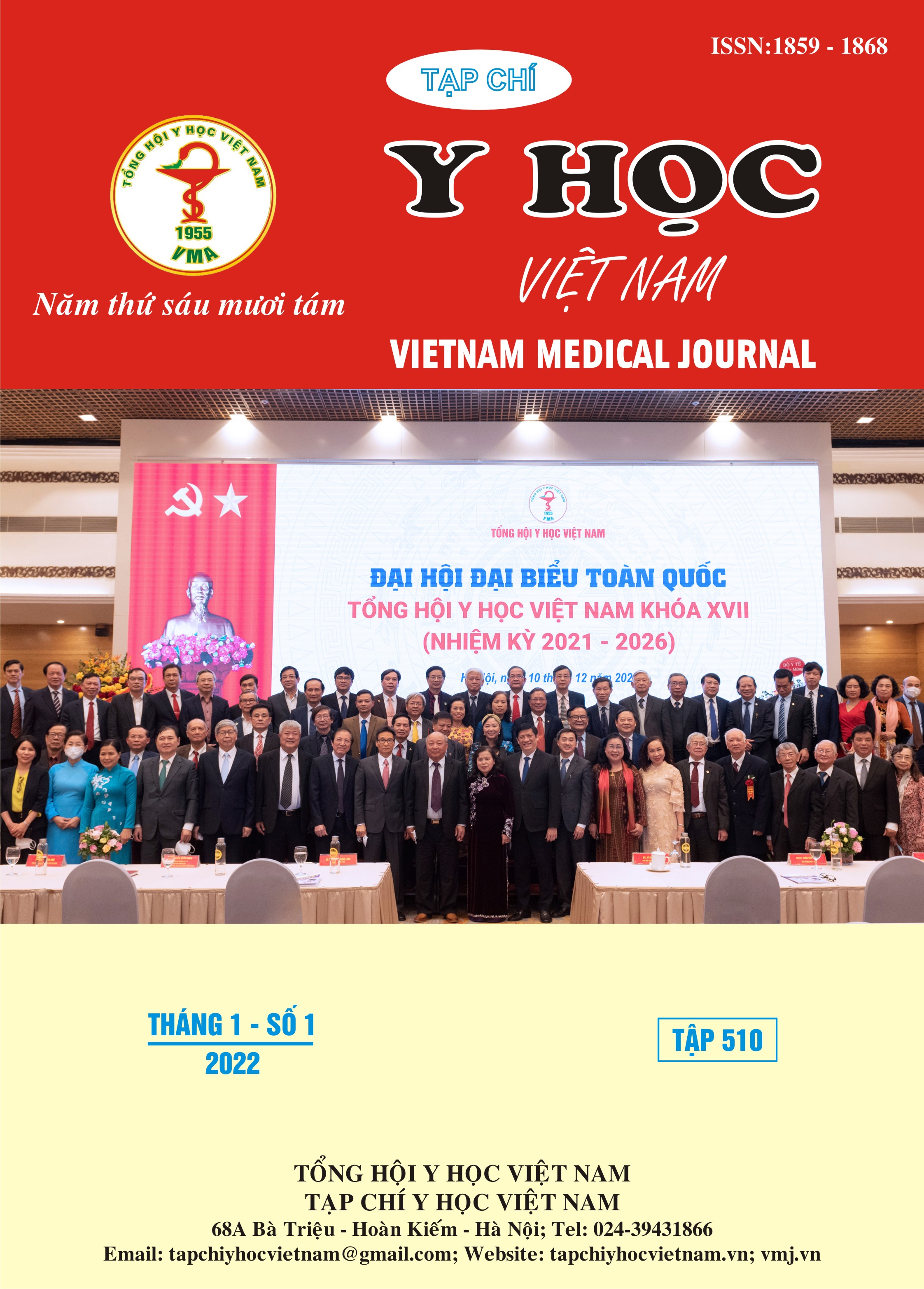THE CLINICAL, LABORATORY AND TREATMENT OUTCOME OF BLOOD TRANSFUSION IN THALASSEMIA PATIENTS AT THAI NGUYEN CENTRAL HOSPITAL
Main Article Content
Abstract
Objective: describle the clinical, laboratory and treatment outcome of blood transfusion in thalassemia patients at Thai Nguyen central hospital. Subjects and methods: Cross-sectional description of 53 patients were diagnosed with thalassemia at Thai Nguyen Central Hospital from June 2020 to September 2021. Result: 100% of patients have iron overload in which severe iron overload accounts for 67.9%. Patients with splenomegaly and splenectomy accounted for 83%, in which the rate of patients with grade I - II splenomegaly was the highest (50.9%). The number of patients with hepatomegaly accounted for 74.4%, dark skin accounted for 58.5%, 86,8% of patients with jaundice. The average Hb concentration at admission of the patients was: 65.91 ± 12.33g/l. 20.8% of patients had positive Coombs test results. The average interval between two consecutive blood transfusions of the study group patients was 4.82 ± 1.26 weeks. The average volume of red blood cell infusion in 1 course of treatment was 477.36 ± 179.36ml. The average Hb concentration at discharge was 102±10.45g/l. The average increase in Hb concentration was 36.83 ± 13.84 g/l. The average need for blood transfusion/year is 251.58 ± 113.05 ml/kg/year. The average weekly rate of decrease in Hb concentration was 5.25±3.54g/l/week. Conclusion: All patients have some clinical features such as: hepatomegaly, dark skin, jaundice, splenomegaly. The mean Hb concentration at admission was very low (65.91 ± 12.33g/l). 20.8% of patients had a positive. Coombs test result. The need for blood transfusion of patients by year is very high (251.58 ± 113.05ml/kg/year). The rate of patients with severe iron overload is 67.9%, this subject needs to be actively chelated and monitored for complications.
Article Details
Keywords
Thalassemia, hemoglobin, blood transfusion, iron overload
References
2. Bùi Văn Viên (2009), Nghiên cứu thực trạng truyền máu cho bệnh nhân thalassemia tại Bệnh viện Nhi Trung ương và một số yếu tố liên quan đến giảm nồng độ hemoglobin sau truyền, Đại học Y Hà Nội, Hà Nội.
3. Lâm Thị Mỹ , Đỗ Hoàng Cúc (2010), "Khảo sát thiếu máu tán huyết miễn dịch ở bệnh nhân thalassemia truyền máu nhiều lần tại bệnh viện Nhi Đồng I", Y học thành phố Hồ Chí Minh. 14 (1),Tr 82-89.
4. Lê Quốc Trung, Nguyễn Thanh Hải, (2019), "Đặc điểm lâm sàng, cận lâm sàng, kháng thể kháng hồng cầu và đánh giá kết quả điều trị trẻ bị thalassemia tại Bệnh viện Nhi đồng Cần Thơ từ 9/2018 -7/2019", Tạp chí y Dược học Cần Thơ.Tr 22-25.
5. Nguyễn Kiều Giang , Hoàng Khải Lập , Nguyễn Tiến Dũng (2017), "Sàng lọc Thalassemia tại huyện Định Hóa, tỉnh Thái Nguyên", Y học thành phố Hồ Chí Minh. 21 (6),Tr.236-244.
6. Porter J (2018), "Beyond transfusion therapy: new therapies in thalassemia including drugs, alternate donor transplant, and gene therapy", Hematology Am Soc Hematol Educ Program. 2018 (1),pp.361-370.
7. Cappellini M-D, Cohen A, Porter J, et al. (2014), Guidelines for the management of transfusion dependent thalassaemia (TDT), Thalassaemia International Federation Nicosia, Cyprus.
8. Cappellini M C A, Eleftheriou A (2014), Guidelines for the Clinical Management of Thalassaemia [Internet], Thalassaemia International Federation TIF.


